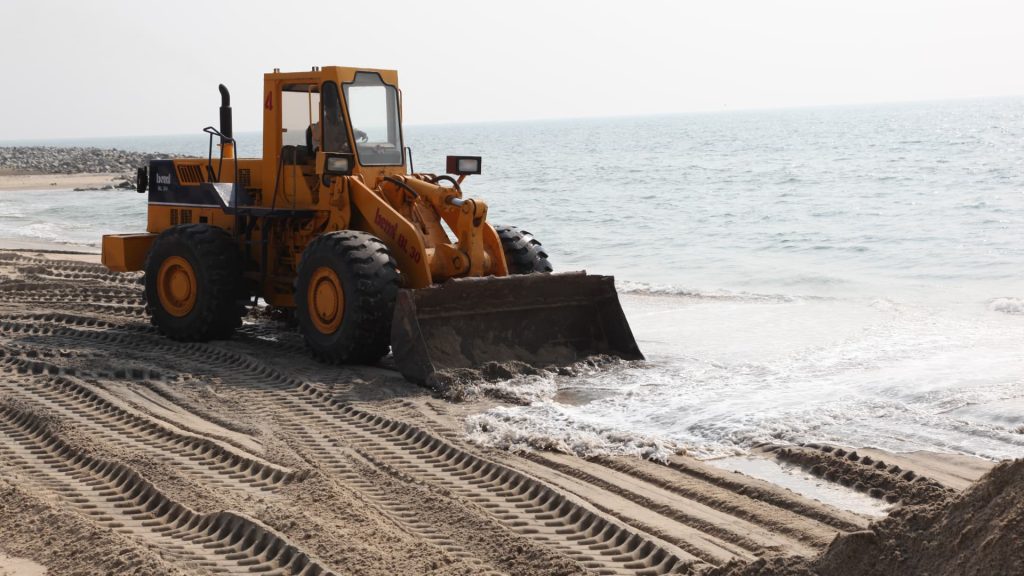Indian Rare Earths extracts rare earth elements from beach sands in Kerala, India.
Pallava Bagla | Corbis News | Getty Images
India, like many countries, is facing China’s restrictions on rare earth exports — and it wants to develop its own domestic supplies. Experts say it could become an important alternative to China for partners such as the U.S., but will require much more public and private investment in the sector.
In recent weeks, the world has been grappling with a rare earths shortage in light of those curbs from China. Auto manufacturers across India, the U.S., Japan, South Korea, and Germany have been affected.
In response, Indian officials are evaluating how India Rare Earths, a government-owned company, can be leveraged to increase rare earth magnet production, sources told CNBC-TV18.
The report comes just days after India’s Union Minister of Commerce and Industry Piyush Goyal called China’s pause in exports of rare earth elements a “wake-up call” for the world and an opportunity for India to provide an alternative.
Geoffrey Pyatt, senior managing director of critical minerals at McLarty Associates and former U.S. assistant secretary of state for energy resources from 2022 to 2025, echoed the commerce minister’s statements.
“This is both a wake-up call and an opportunity for us to deepen U.S.-India collaboration on an issue important to future economic competitiveness,” he told CNBC.
China’s dominance
Beijing recently signaled plans to ease controls, and U.S. President Donald Trump has said that a trade deal with China that includes a resolution on rare earths is “done.” But China’s control of rare earth elements (REEs) was not a new policy, with gradual restrictions of international sales occurring over the past two years.
The recent shortage has further highlighted the dominant position the country has in REEs: It produces roughly 60% of the world’s supply of rare earths and processing almost 90%, which includes materials imported from other countries.
That gives Beijing considerable leverage over a supply of minerals crucial for various modern technologies, including robotics, clean energy, batteries and military equipment.
India’s potential
It’s important to note, however, that REEs are not rare in nature. While China has the largest deposits of REEs at 44 million tons, India also has a substantial amount at 6.9 million tons, according to the U.S. Geological Survey. That gives it the world’s third-largest share of reserves behind that of Brazil.
India also has nearly 35% of the world’s beach and sand mineral deposits, which are significant sources of important rare earths, according to a recent report from D. K. Srivastava, India chief policy advisor at EY.
Given those considerable reserves, India is “poised to play a key role in building a more diversified global rare earths supply chain,” Gracelin Baskaran, director of the Critical Minerals Security Program at the Center for Strategic and International Studies, told CNBC.
However, in order to use REE reserves, countries need the ability to mine and extract raw materials, as well as the capacity and technology to process and refine them for final use.
In those areas, Indian Rare Earths, which was founded in 1950, could present a good partner for countries such as the United States, Baskaran said, adding that it has no Chinese investment.
India also launched the National Critical Mineral Mission in 2025 with the aim of developing an effective framework for REE self-reliance in the face of China’s restrictions and other threats posed to the geographically concentrated supply chain.
However, experts say that building domestic capabilities quickly is a tall order.
“Going forward, substantial additional resources need to be allocated by central and state governments as well as the private sector for research and development in the field of rare earths,” EY’s Srivastava said in his report.
Sources told CNBC-TV18 the Indian government is also considering private sector collaboration with India Rare Earths to speed up domestic capacity. Among the options being considered are government incentive schemes and capital subsidies aimed at encouraging local mining and processing.
“India will not be able to replace China’s position in the market, but it can certainly play an important role in providing a new source of rare earths,” Baskaran said.
In the meantime, Minister of Commerce and Industry Piyush Goyal said, India is also searching for alternative sources, and that he hopes Indian companies would receive import approvals from China soon.
A delegation of Indian auto industry representatives is also gearing up for a China visit in an attempt to expedite their imports of rare earth magnets, according to local reports citing industry sources.


